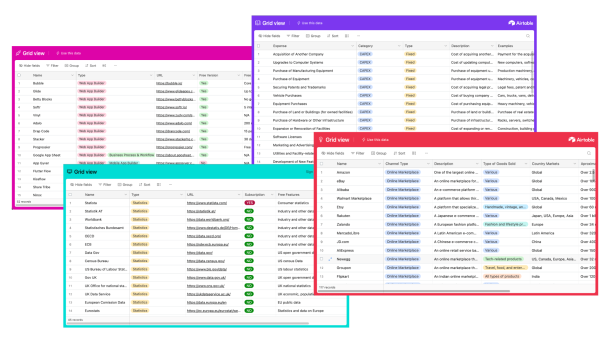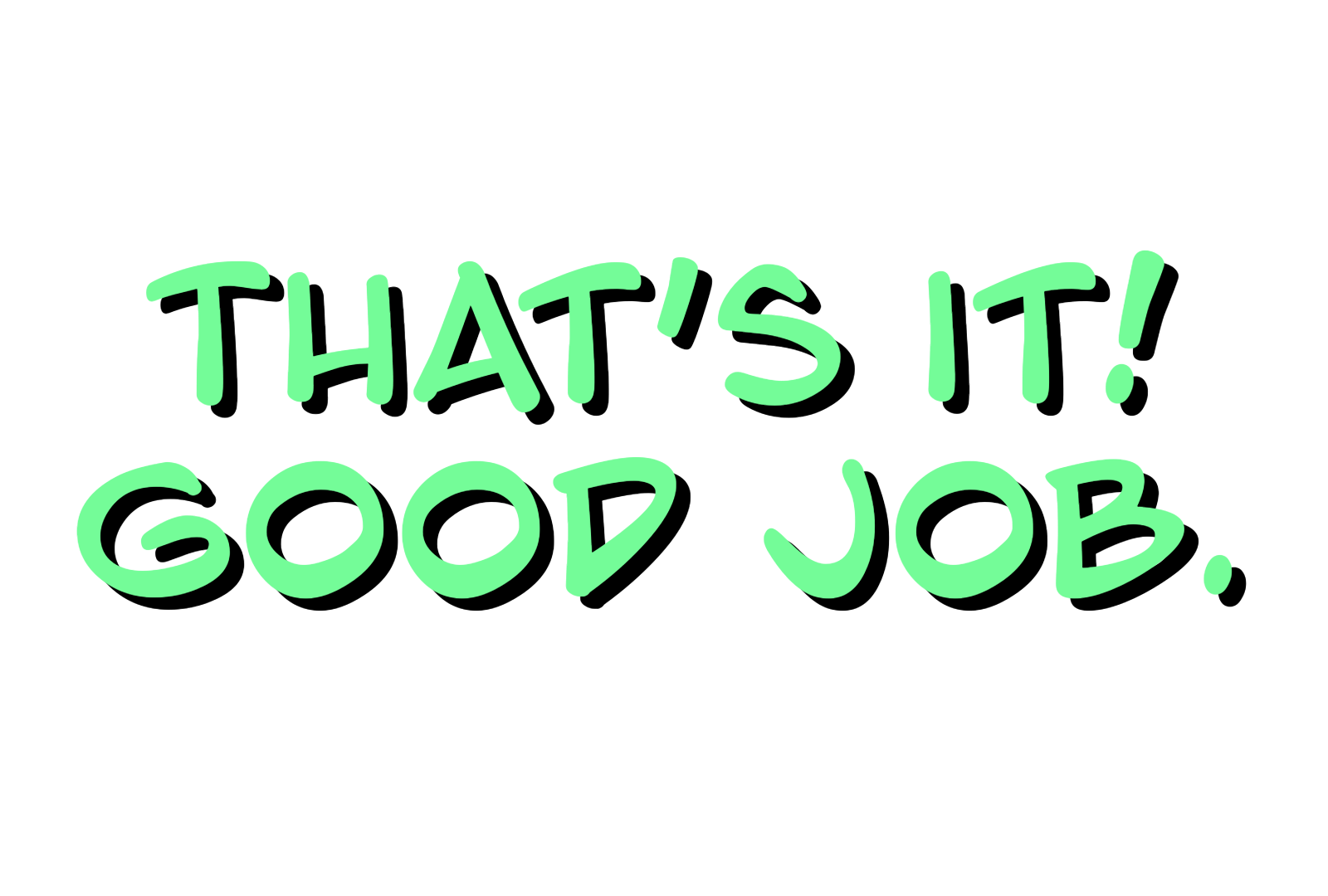Product Validation Guide
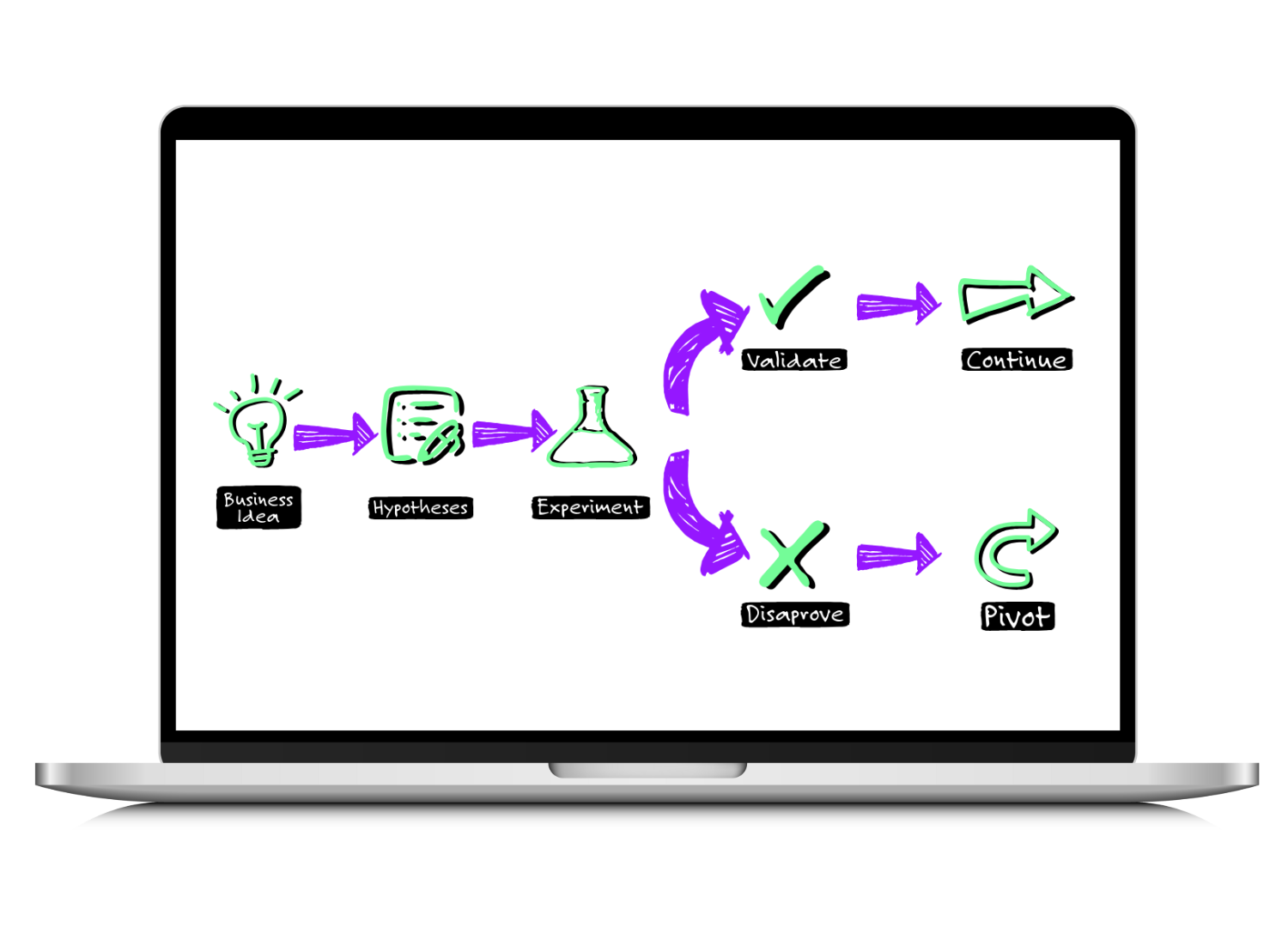
What is Product Validation?
While you are building your MVP or the initial version of your product/services, you want to already start validating your business idea, meaning you want to test and verify whether your business idea in general and certain aspects of it have the potential to succeed in the market.
This helps you to assess the potential of your idea and evaluate different features and aspects of it before investing time and resources into developing them. It gives you the chance to identify potential risks, challenges and opportunities at an early stage, refine your business strategy or pivot your idea if necessary.
You essentially want to validate three things: your ideas feasibility, desirability and viability.
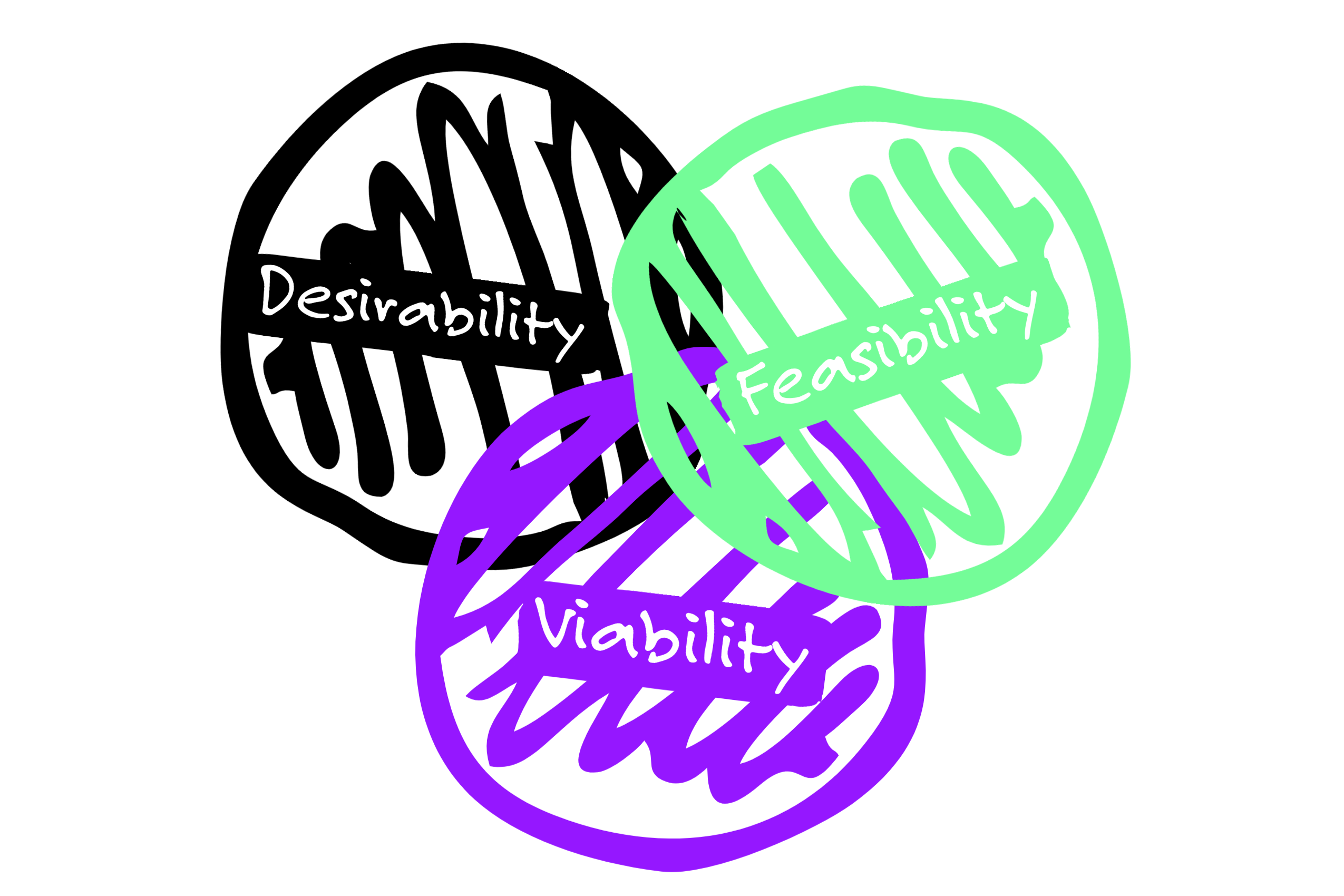
- Feasibility refers to whether or not the idea can be implemented successfully, taking into account factors such as available resources, technical feasibility, legal and regulatory requirements, and operational feasibility.
- Desirability refers to whether or not there is sufficient demand or interest in the proposed product or service among potential customers. This includes considerations such as market size, customer needs and preferences, and potential competition.
- Viability refers to whether or not the idea can generate sustainable profits and be financially viable in the long term. This includes considerations such as revenue potential, cost structure, and potential profitability.
You can test these criteria through a number of validation experiments. We will give you an overview of different types of experiments that you can run and go through the process of validating your idea in this work package.
Note: 🍋 Throughout this guide we will use the example of a food supplement company to better illustrate each task and information.
What is Product Validation Good For?
Validating your product idea is instrumental in mitigating risks and ensuring the success of your venture. By rigorously testing and validating your concept, you can:
- Mitigate Risks: Identify potential pitfalls and challenges early on, minimizing uncertainties and maximizing the likelihood of success.
- Make Informed Decisions: Gather data and insights that inform strategic decisions, guiding the development and refinement of your product offering.
- Maximize Chances of Success: Increase the probability of building a product that meets market needs, resonates with customers, and achieves sustainable growth.
Curated Lists 📋
💡 To save you some time, we have prepared a free list with Validation Experiments which you can to validate your product or service idea.
How to Validate your Product Idea Step-by-Step:
Step A: Validation Experiments Template
Step B: Define your Hypotheses
Step C: Select & Define your Experiments
Step D: Evaluate the Results
Step A
Validation Experiments Template
To validate your product/service idea you can either build your own whiteboard template for example on Miro or you can use our ready-to-use template along with this guide.
Included Templates:

Validation Experiments Miro Board
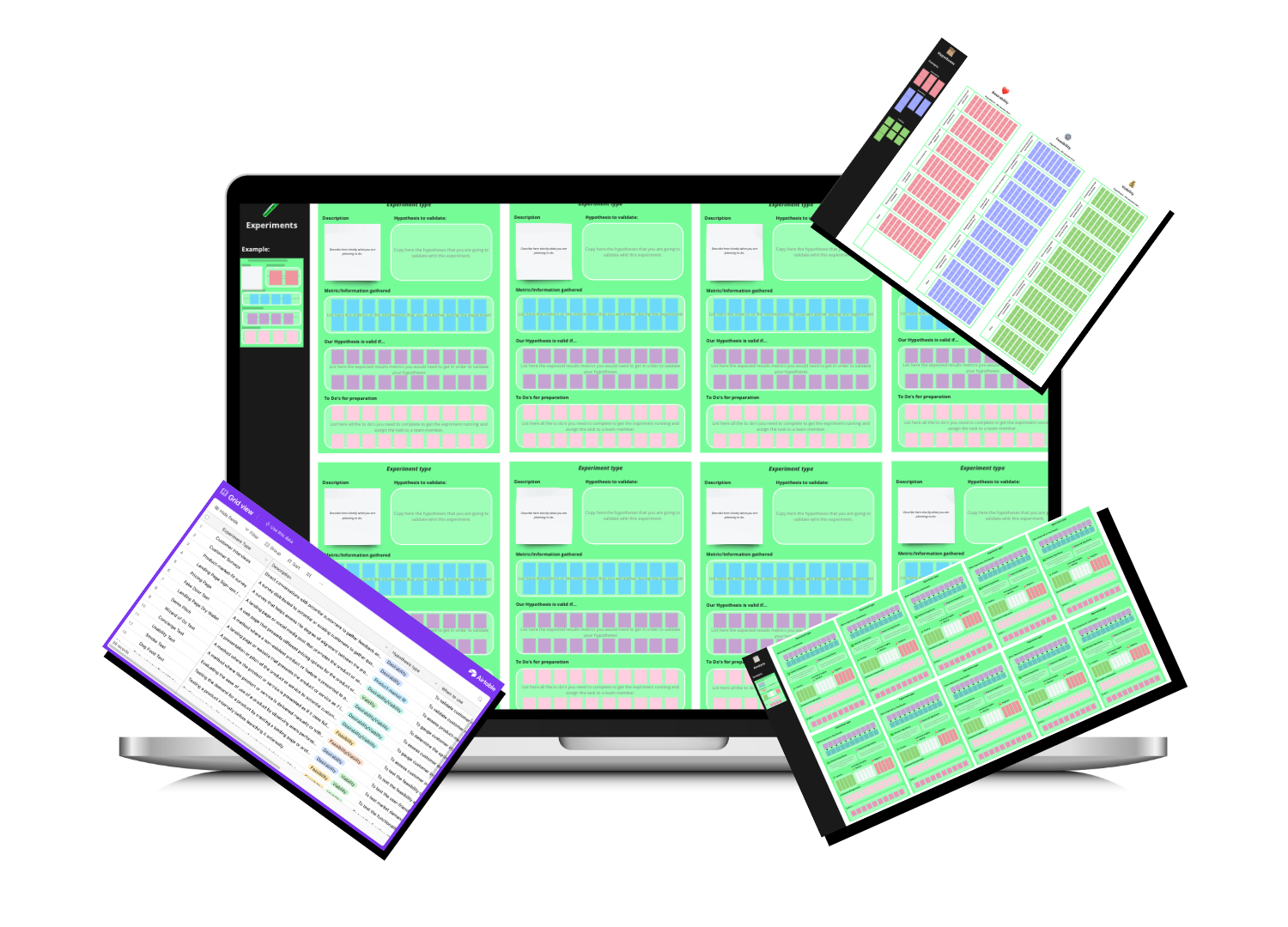
Step B
Define your Hypotheses

The first thing you want to do is to define the different hypotheses that you want to test. A hypothesis is a proposed explanation or assumption about a certain aspect of your business idea that needs to be validated or tested. It is a statement that outlines what you believe to be true about your business idea, and it is typically based on assumptions and prior knowledge about the market, customers, and competitors.
By systematically testing your assumptions, you can identify what works and what doesn’t, and use this information to make more informed decisions about your business.
Hypotheses can cover a wide range of topics, so go ahead and think about which hypothesis you can make in terms of your business ideas desirability, feasibility and viability:
Desirability Hypothesis
These hypotheses are focused on testing whether the business idea meets the needs, preferences, and desires of the target customers. The purpose of testing the desirability hypothesis is to determine if the target customers are interested in the product or service being offered and if they are willing to pay for it. Topics of these hypotheses could be for example:
|
Topic |
Example |
|
Customer needs and pain points |
Hypothesis: Customers will value personalized supplement plans based on their blood test results to address specific health concerns such as fatigue or digestive issues. |
|
Customer preferences and behavior |
Hypothesis: Customers will prefer a monthly subscription service for supplements rather than one-time purchases due to convenience and cost-effectiveness. |
|
Target market size and segments |
Hypothesis: There is a large enough target market of health-conscious consumers who are interested in personalized health solutions to support the growth of the business. |
|
Product-market fit |
Hypothesis: The personalized supplement subscription service will meet the needs of customers and fit well within the health and wellness market. |
|
Unique value proposition |
Hypothesis: The personalized blood test-based supplement subscription service will provide a unique and innovative solution for customers looking for individualized health support. |
|
Brand positioning and messaging |
Hypothesis: The brand messaging will focus on the benefits of personalized health and wellness and the convenience of the monthly subscription service. |
Feasibility Hypothesis
These hypotheses are focused on testing whether the business idea can be implemented with the available resources, technology, and skills. The purpose of testing the feasibility hypothesis is to determine if the business idea can be executed successfully and efficiently. Topics of these hypotheses could be for example:
|
Topic |
Example |
|
Technical requirements and limitations |
Hypothesis: The technology needed to analyze blood test results and generate personalized supplement plans can be developed and integrated into the subscription service. |
|
Resource availability and constraints |
Hypothesis: Adequate resources such as funding and personnel can be obtained to support the development and growth of the business. |
|
Operations and logistics |
Hypothesis: The supplement subscription service can be efficiently managed and delivered to customers through an online platform. |
|
Supply chain management |
Hypothesis: The necessary supplement ingredients can be sourced and managed efficiently to ensure the quality of the product. |
|
Regulatory and legal considerations |
Hypothesis: The business can comply with relevant regulations and laws related to dietary supplements and health products. |
|
Intellectual property protection |
Hypothesis: Appropriate intellectual property protection can be obtained for any unique aspects of the business, such as the technology used for blood test analysis. |
|
Skill and expertise requirements |
Hypothesis: The necessary skills and expertise can be obtained or developed within the team to support the development and growth of the business. |
Viability Hypothesis
This hypothesis is focused on testing whether the business idea can generate sustainable revenue and profit over the long term. The purpose of testing viability hypotheses is to determine if the business idea can be a viable and profitable venture. Topics of these hypotheses could be for example:
|
Topic |
Example |
|
Competitive landscape and analysis |
Hypothesis: The personalized supplement subscription service can compete with existing health and wellness solutions by providing a unique and innovative offering. |
|
Market demand and growth potential |
Hypothesis: There is significant market demand for personalized health solutions, and the business has the potential for growth in the future. |
|
Revenue streams and pricing strategy |
Hypothesis: The business can generate revenue through monthly subscription fees and potentially additional revenue streams such as product sales or partnerships. |
|
Sales and distribution channels |
Hypothesis: The supplement subscription service can be effectively marketed and sold through online channels such as social media and e-commerce platforms. |
|
Cost structure and financial projections |
Hypothesis: The business can maintain a sustainable cost structure and generate sufficient revenue to be profitable over time. |
|
Return on investment and profitability |
Hypothesis: The business can provide a return on investment for investors and achieve profitability within a reasonable time frame. |
|
Business scalability and sustainability |
Hypothesis: The business model can be scaled up to meet demand and maintained over time |
You can use the first part of the Validation Experiments 📒Template to note down you hypothesis. Use a post-it and note down your hypotheses and complete the sentence “We assume that…”.
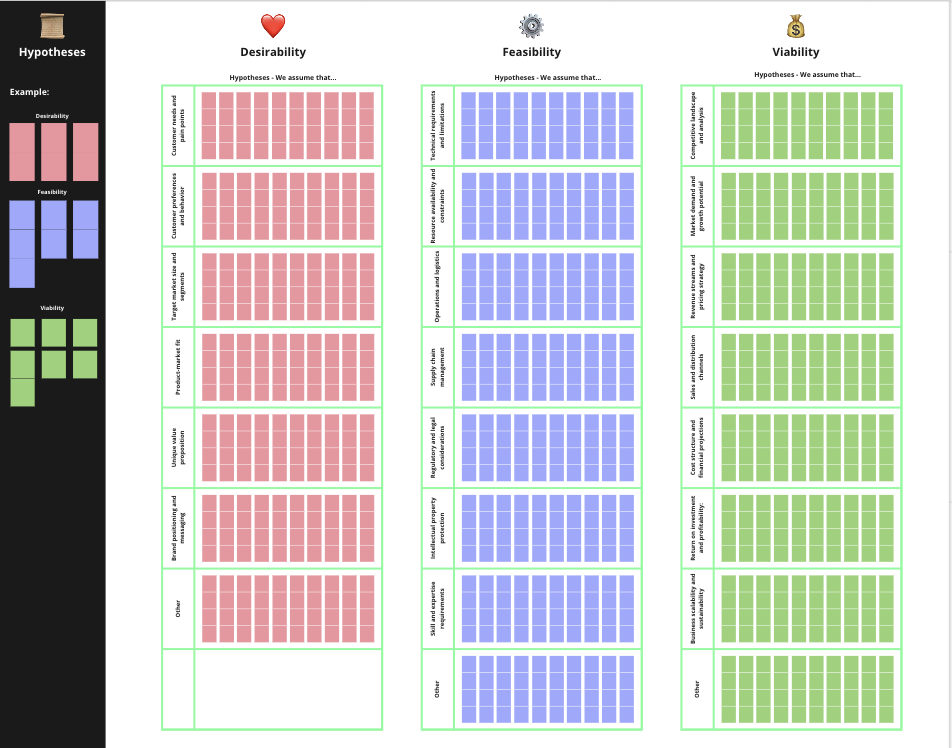
Step C
Select & Define your Experiments

Once you are clear about your hypotheses, you want to select and define the right experiments to validate those hypotheses. There are a lot of different types of experiments or tests that you can run and that enable you to gather different types of information. Also note
Which ones you choose depend on the nature of your business idea, your skills and/or budget and of course the hypotheses you want to validate.
We put together a List of experiments that can help you to find the right ones to validate your business idea.
You can use the second part of your Validation Experiments 📒Template to select and define your experiments:
- Choose the experiments you want to run
- For each experiment, describe shortly what you are planning to do
- Select the hypotheses that you are going to validate with each experiment
- Define and list the metrics or information that you are planning to gather with each experiment
- For each experiment, define which results you would need to get in order for the different hypotheses to be valid
- Define and assign the tasks you will need to complete to prepare and run each experiment
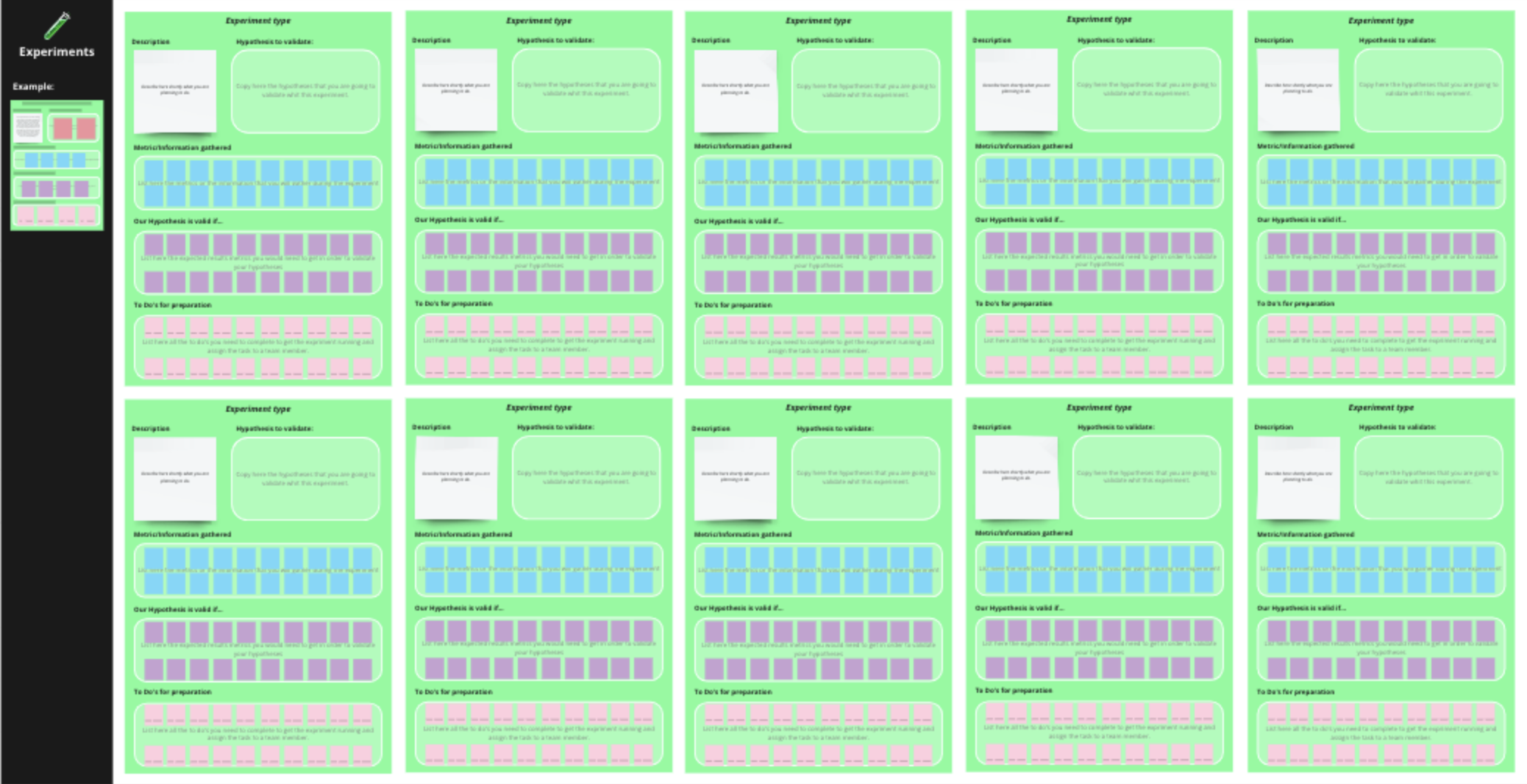
Now that you know which experiments you want to conduct you can get to work preparing and running the experiments. Make sure to set clear responsibilities and deadlines so the experiments are completed in time.
Step D
Evaluate the Results

At last, once you did run your experience you want to analyze the metrics and information you gather and evaluate your results to identify possible actions.
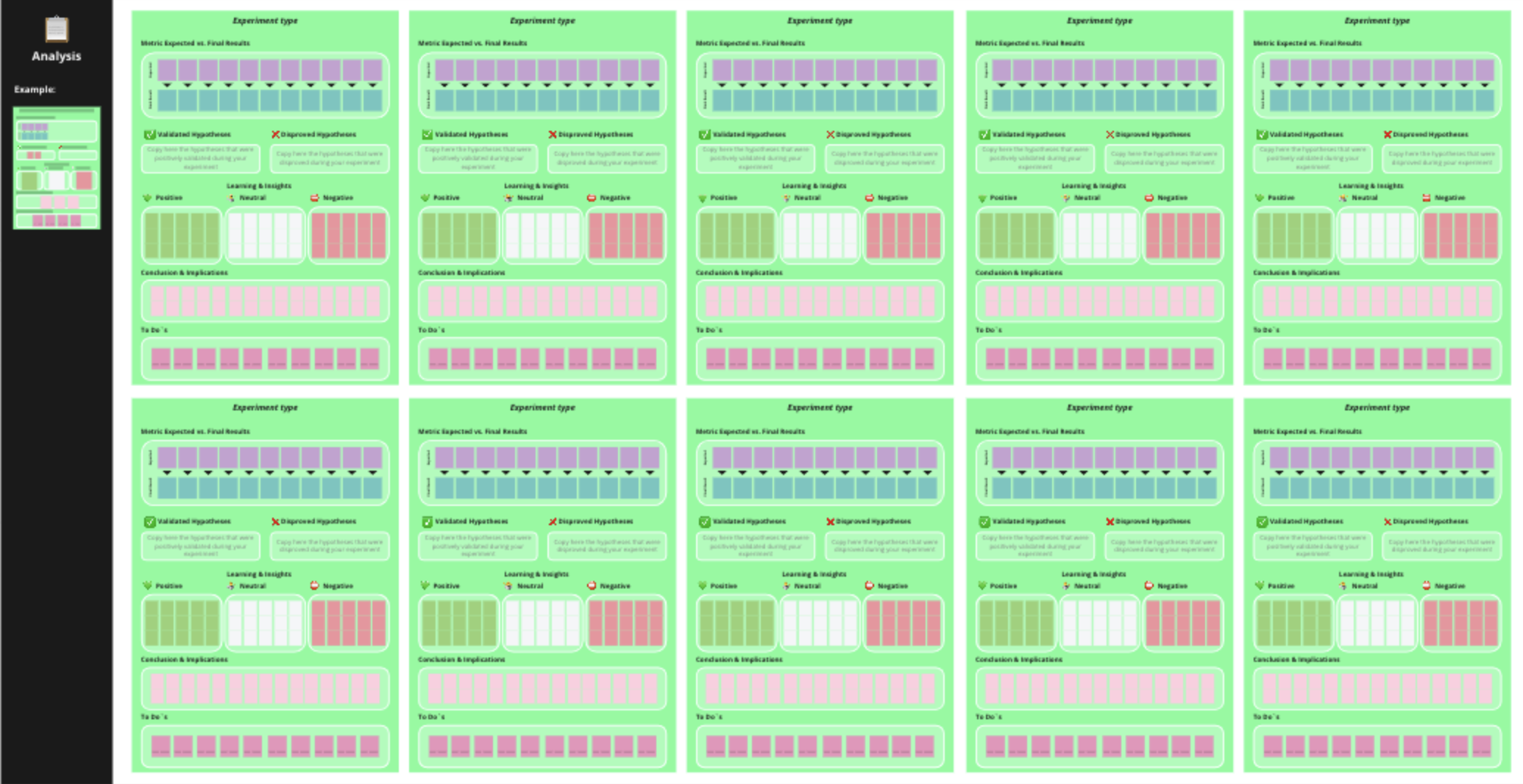
To do so you can use the third part of your Validation Experiments 📒Template and document the results of each experience in one of the provided sheets.
- Start with comparing the expected metrics, which you priorly defined (Our Hypothesis is valid if…) to the final results. Are the results better or worse than expected?
- Considering these results list the hypotheses that could be positively validated , and those ones that were disproved through the experiment.
- Now note down the learnings and insights you gained from the experiment. Differentiate between the positive, the negative and the neutral ones.
- Based on these findings and results identify the conclusion and implications for your business, do you have to pivot the business strategy or business idea, if yes how? Which adjustment do you have to make to your product/service?
- Finally detail the tasks which you have to work on in the next steps to implement any adjustment or to change direction.

